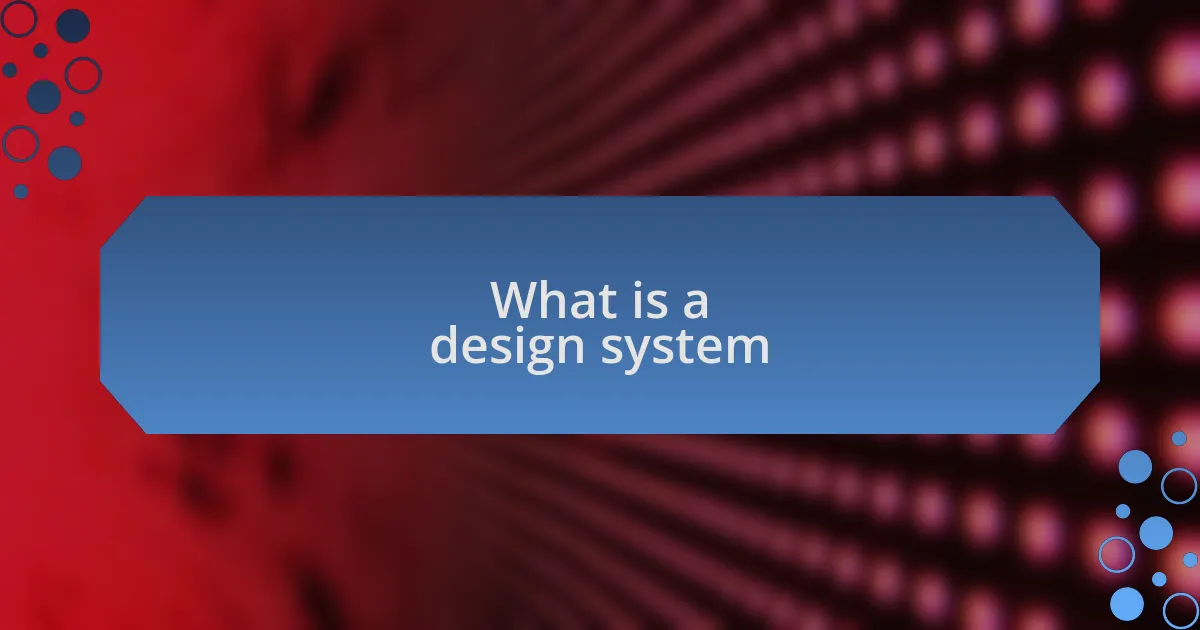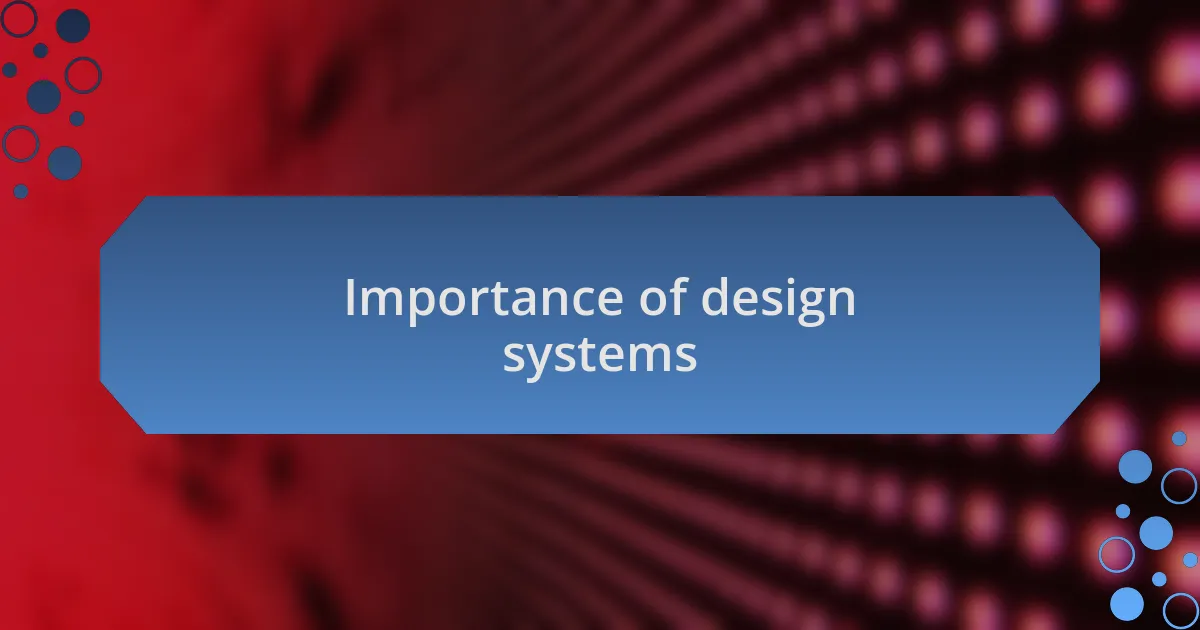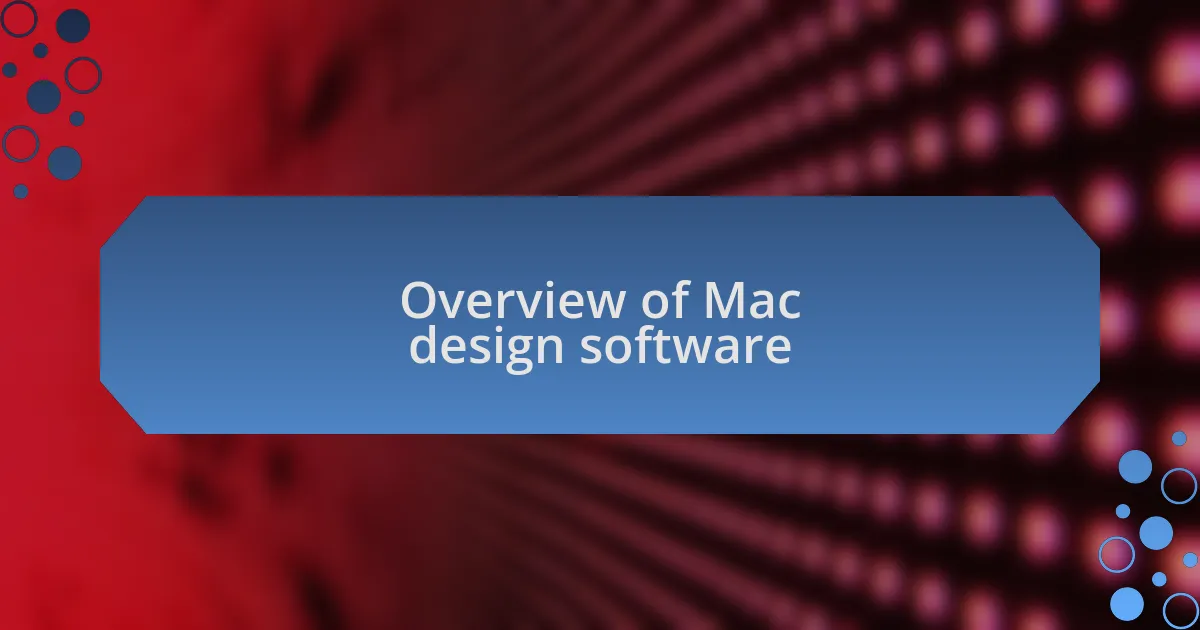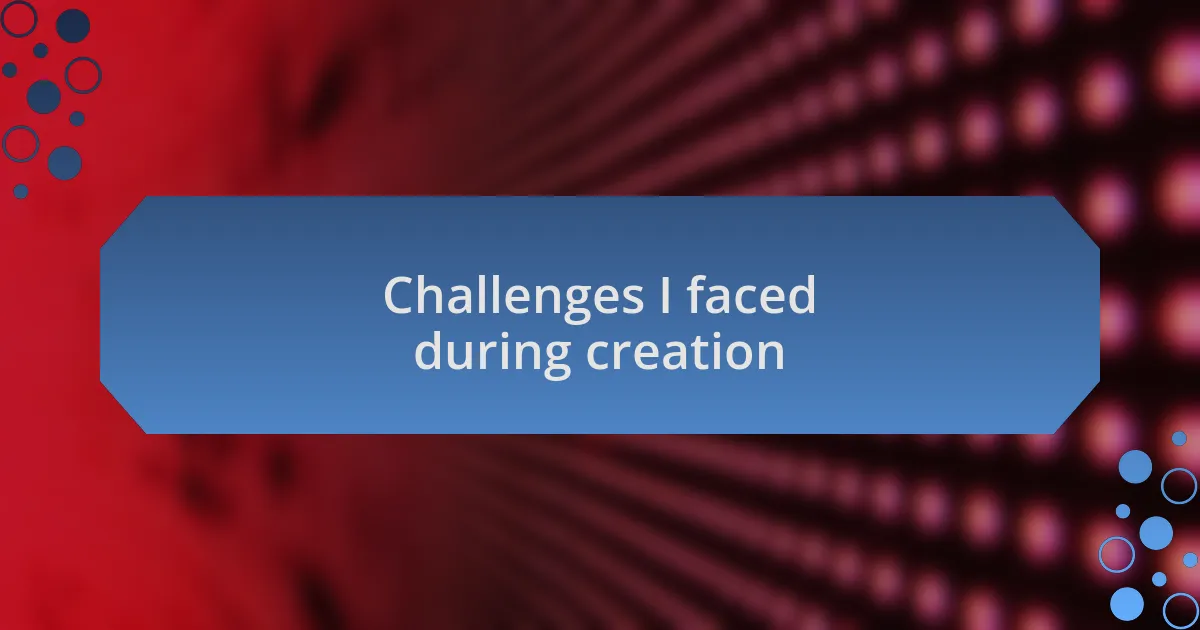Key takeaways:
- A design system is a collection of reusable components and guidelines that enhances consistency and collaboration in product design.
- Implementing a design system can significantly reduce development time by minimizing feedback loops and maintaining a cohesive user experience.
- The right design software, like Sketch, Adobe XD, and Figma, can streamline collaboration and boost creativity, making project execution more efficient.
- Creating a design system involves challenges such as balancing consistency with creativity, ensuring clear documentation, and overcoming technical issues.

What is a design system
A design system is essentially a collection of reusable components and guidelines that provide a consistent framework for designing and building products. I recall the first time I encountered this concept; it was like finding a treasure map that led to clarity amid chaos. It makes me wonder—how often have we struggled with inconsistency in our projects?
Within a design system, you’ll find design patterns, color palettes, typography choices, and even layout principles. I vividly remember the initial excitement I felt when I started utilizing a shared library for my designs, realizing how quickly I could create prototypes without reinventing the wheel every time. It felt liberating!
As I developed my first design system, I learned that it not only streamlines the design process but also fosters collaboration across teams. I sometimes ask myself, how can a single resource align designers and developers so effectively? It’s fascinating to see how a well-structured design system can enhance communication and unity in a project, ultimately leading to a polished final product.

Importance of design systems
Maintaining a consistent user experience is paramount in any project, and that’s where design systems shine. I remember one project where we launched without a design system, and the confusion that ensued was palpable. It made me realize that having a clear structure not only reduces discrepancies but also enhances user trust—users feel more at ease when the visual language remains constant across different sections of a website.
Moreover, design systems significantly speed up the development lifecycle. Early in my journey, I struggled with lengthy feedback loops; designs would often get lost in translation between teams. Once I implemented a design system, the clarity it provided drastically shortened those loops. I often reflect on how much time I’ve saved, allowing me to focus on innovation rather than fixing inconsistencies.
Another crucial aspect is scalability. A well-crafted design system can adapt as your product grows, making it easier to integrate new features while preserving the visual identity. I experienced this firsthand when we expanded our features; relying on established components meant we could roll out updates swiftly. It leads me to ask—how could your projects benefit from this kind of agility? Embracing a design system might just be the key to transforming your workflow.

Overview of Mac design software
Mac design software offers a diverse toolkit for creators, enabling them to bring their visions to life with precision. For instance, I often find myself reaching for Sketch, which has been my go-to for UI design thanks to its intuitive interface and robust plugin ecosystem. If you’ve ever worked on a project where time was tight and expectations were high, you likely understand the need for efficient tools to keep creativity flowing.
In addition to Sketch, Adobe XD stands out as a powerful contender, particularly for its seamless collaboration features. I remember a project where my team and I were scattered across different locations. Adobe XD’s real-time sharing made it so much easier to gather feedback and iterate on designs quickly. Have you considered how the right software can turn collaboration from a headache into a smooth, enjoyable experience?
Finally, Figma has secured its place in my heart for its web-based functionality that enables design on the go. I recall being at a café, laptop open, making adjustments to a project in real-time with my colleague who was at another table. It struck me how design is no longer confined to a studio; with Mac software, inspiration can strike anywhere. What tools have facilitated your creative flow on a Mac? Embracing the right software could redefine your design process.

Challenges I faced during creation
Creating my first design system was far from a smooth ride. One of the biggest hurdles I encountered was balancing consistency with creativity. I remember a particular moment when I had crafted a beautiful button style, only to realize it clashed with another element I had already designed. Have you ever felt that pang of frustration when something you thought was perfect just doesn’t fit? It was a tough lesson in understanding that every piece must work together cohesively.
Another challenge was documentation. As I began to outline guidelines for how to use the design system, I found myself overwhelmed. I wanted to ensure that the details were precise but accessible, so others could easily follow. I often questioned whether my descriptions were clear enough. It reminded me of times in school when I struggled to convey my ideas in a way that my peers could grasp. I had to remind myself that simplicity was key, even if it felt like oversimplifying at times.
Finally, I faced the inevitable technical issues. One day, I spent hours integrating components in my design software, only for the system to crash unexpectedly. I felt as if I’d lost not just progress, but a part of my motivation. Has that ever happened to you? That moment taught me the importance of backups and maintaining a positive mindset, as frustrating as it was. Ultimately, these challenges shaped my development process, pushing me to grow as a designer and creator.